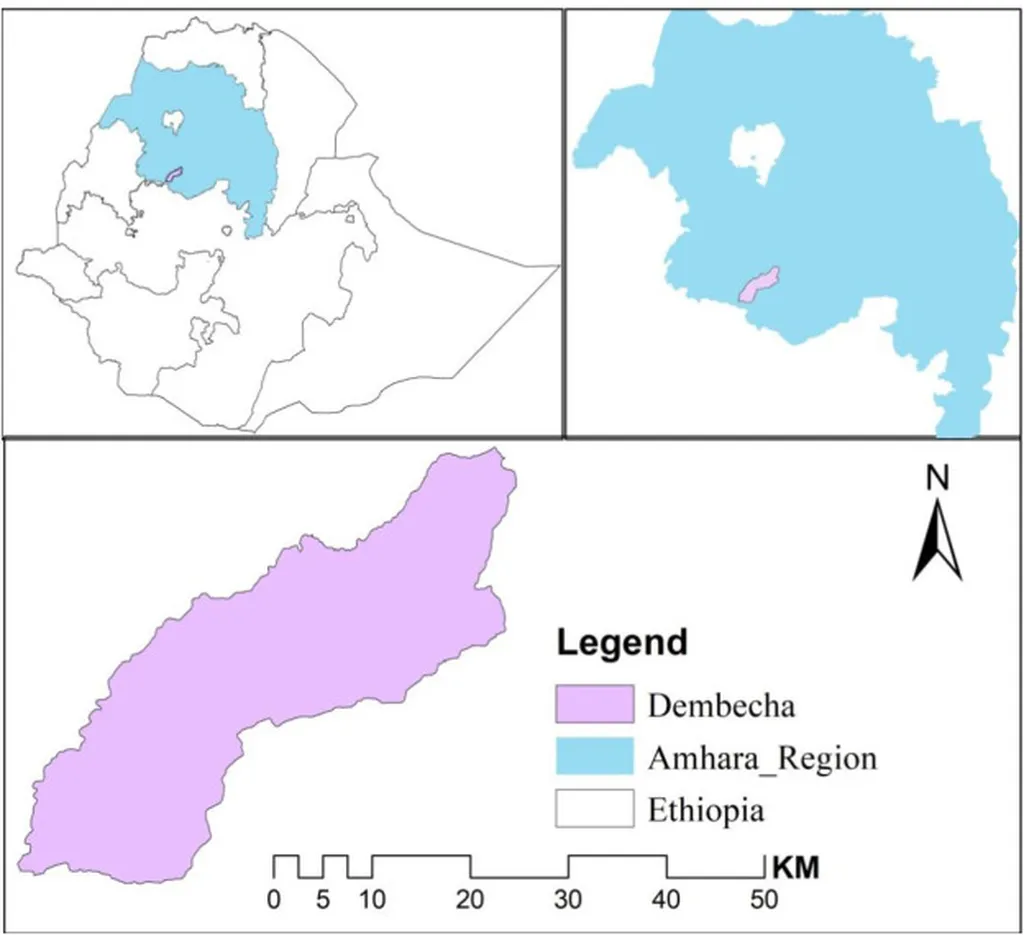In the heart of Ethiopia’s highlands, where the land is as vital as the people who till it, a pressing environmental challenge looms large: soil erosion. This issue is particularly acute in the Soro District of Central Ethiopia, where land degradation threatens not only agricultural productivity but also the livelihoods of smallholder farmers. A recent study published in *The Scientific World Journal* (translated as “The Scientific World Journal”) sheds light on the key factors influencing the adoption of soil and water conservation practices and farmers’ perceptions of soil erosion, offering critical insights for sustainable agriculture and, by extension, the broader energy sector.
Led by Esiyas Estefanos of the Department of Rural Development and Agricultural Extension, the study employed a mixed-methods approach, combining household surveys, focus group discussions, and field observations to gather both quantitative and qualitative data. The findings reveal a complex interplay of factors that either encourage or hinder the adoption of conservation practices.
Probit regression analysis highlighted that factors such as sex, education, size of farmland, interactions with extension services, participation in conservation training, and household income all played a significant and positive role in encouraging the adoption of soil and water management practices. “Farmers who have access to extension services and training are more likely to adopt conservation practices,” Estefanos noted, emphasizing the importance of knowledge dissemination and support systems.
Conversely, soil fertility was found to have a negative effect on the uptake of soil and water conservation techniques. This counterintuitive finding suggests that farmers with more fertile land may perceive less immediate need for conservation measures, potentially leading to long-term risks.
Farmers in the Soro District perceive damaged conservation structures, soil loss, and farmland fragmentation as key consequences of severe soil erosion. While most farmers recognize soil erosion as a major threat to their land, adoption rates of sustainable practices remain uneven due to economic, institutional, and knowledge-based constraints.
The study underscores the importance of integrating local perceptions into policy frameworks and promoting participatory approaches to enhance the uptake of conservation practices. These insights contribute to the design of more effective and context-specific land management strategies aimed at ensuring long-term environmental sustainability and agricultural resilience in the region.
For the energy sector, the implications are significant. Sustainable agriculture practices can enhance land productivity and resilience, which in turn supports the bioenergy sector by ensuring a steady supply of biomass. Moreover, healthy soils can sequester carbon, contributing to climate change mitigation efforts and aligning with the energy sector’s goals of reducing carbon footprints.
As the world grapples with the challenges of climate change and food security, the findings of this study offer a roadmap for fostering sustainable agricultural practices. By addressing the economic, institutional, and knowledge-based constraints faced by farmers, policymakers and practitioners can pave the way for a more resilient and productive agricultural landscape.
In the words of Esiyas Estefanos, “The adoption of soil and water conservation practices is not just about protecting the land; it’s about securing the future of farming communities and the broader ecosystem.” This research not only highlights the critical role of local knowledge and participation but also points to the broader implications for sustainable development and the energy sector. As we move forward, integrating these insights into policy and practice will be key to achieving long-term environmental and agricultural sustainability.

